To Sagada
Sunday, March 13th, 2011 in: News, Travel
We were joined by a pair of Australians and a an older fil-am couple for the 3 hour Jeepney to Sagada, passing through the heart of mountain province. At the highest point of the pass, we stopped at a small village to take our last break for the next few hours. The rest stop had balut, which the wife was happily eating. “you want to try? My treat!” I had been working up the courage since the Civet cat coffee, and decided to just go for it. I cracked the top of the egg to suck the juices as I had seen her do, before peeling the rest of the egg. The juice tasted like a liquid hard boiled egg, but the sight of the partially-developed yolk had me quavering in my resolve to try it. “lots of calcium and protein!” she could read my grim expression. I bit the proverbial bullet, and the literal egg. Normally I prefer egg whites over yolks, but in balut the whites are like hardened rubber, flavorless and with the consistency of a chewy tire. “oh, you aren’t supposed to eat the whites,” I was chided for my ignorance as I gratefully spat it out.
httpvh://www.youtube.com/watch?v=6q5Q_Janw1w
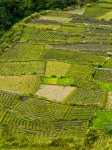 The road from Bontoc to Sagada is sparsely paved, and although it wasn’t as bad as the road up to the Saddle the previous day, it was longer and filled with some insanely bumpy hairpin turns. I’m usually impervious to motion sickness, but this had me wondering if I was going to get another taste of balut that day.
The road from Bontoc to Sagada is sparsely paved, and although it wasn’t as bad as the road up to the Saddle the previous day, it was longer and filled with some insanely bumpy hairpin turns. I’m usually impervious to motion sickness, but this had me wondering if I was going to get another taste of balut that day.
Sagada is a small town about the same size as Banaue, with everything within walking distance of each other. We checked in to a guesthouse and set to wandering about the town. After lunch at a cafe proudly displaying images of local indigenous tribes by Cordilleras photographer Mescaffe, we grabbed a guide to take us through the Cave Connection, a 4 hour journey through the junction of two massive limestone caves, the Lumiang and Sumitang. 300-year old coffins lines the entrance to the Lumiang cave, wedged high on the sloping cave wall; some coffins were unlucky and slipped down to smash themselves on the rocks below, exposing their skeletal contents.
 Our guide, Iven, had been doing this since he was 16. He lit the kerosene lantern and a cigarette simultaneously. “do you mind if I smoke?” it was more a courtesy to us than the cave. “as long as you dispose of the butts responsibly. He smiled and raised the lantern, his makeshift ashtray. It was better than nothing, and we didn’t want a cranky guide going through nicotine withdrawals. So by the light of a kerosene lamp and the ember of his cigarette, we overcame an excited group of call center workers on holiday.
Our guide, Iven, had been doing this since he was 16. He lit the kerosene lantern and a cigarette simultaneously. “do you mind if I smoke?” it was more a courtesy to us than the cave. “as long as you dispose of the butts responsibly. He smiled and raised the lantern, his makeshift ashtray. It was better than nothing, and we didn’t want a cranky guide going through nicotine withdrawals. So by the light of a kerosene lamp and the ember of his cigarette, we overcame an excited group of call center workers on holiday.
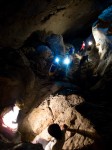 The limestone caves were impressive, with some stalagmite formations pushing millions of years in the making. Some squeezes and rope-climbing helped spice up the tour, which was otherwise trying not to slip on the slick limestone as we scrambled from one large chamber to the next. The second cave was inhabited by bats, giving us one more thing to watch out for. “if you look up, keep your mouth closed, last week a German women laughed when I told her and just then a bat pooped right in her mouth. She kissed bat shit!” he cackled but we didn’t dare open our mouths.
The limestone caves were impressive, with some stalagmite formations pushing millions of years in the making. Some squeezes and rope-climbing helped spice up the tour, which was otherwise trying not to slip on the slick limestone as we scrambled from one large chamber to the next. The second cave was inhabited by bats, giving us one more thing to watch out for. “if you look up, keep your mouth closed, last week a German women laughed when I told her and just then a bat pooped right in her mouth. She kissed bat shit!” he cackled but we didn’t dare open our mouths.
It was already dark when we exited the second cave. Iven walked us back to town and recommended the Kimchi restaurant for dinner.
The owner of Kimchi had lived in Korea for 11 years, hence the name. In addition to providing some comfort food to the Korean tourists who passed through the area, Kimchi served as Sagada’s only bar, shutting down at 10pm, in respect of the local curfew hours. The clientele was a random sampling of the traveling population, from expats to weekend warriors of all nationalities. The band from Baguio was jamming reggae hits and everyone swapped stories and itineraries. the evening was great fun, and we ended up leaving with the band for more laughs and music until we crashed at around midnight.

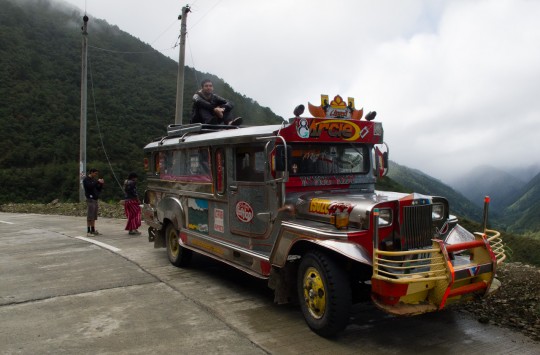


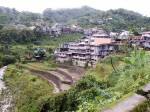


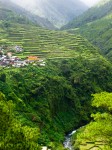
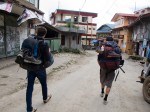
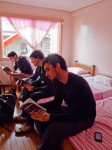
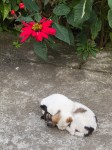
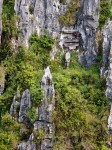
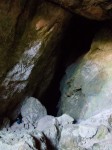


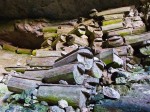
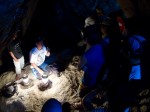

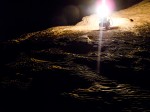
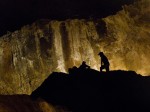
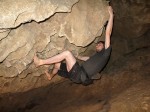

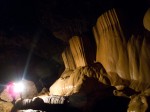
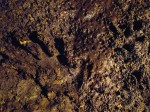

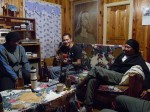
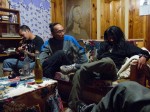








Leave a Reply